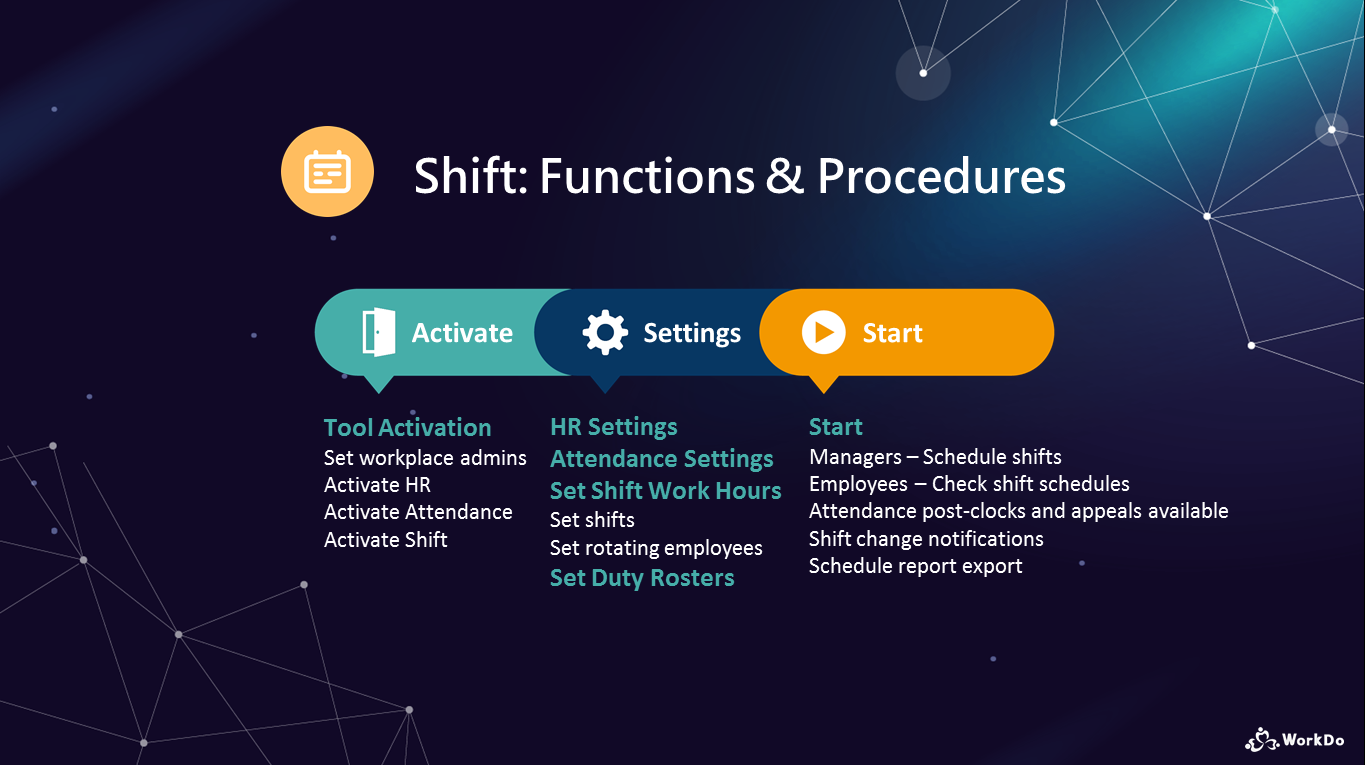FAQ-ID:1115
Shift scheduling is an integral part of any business that operates on shift work. Effective scheduling helps businesses reduce labor costs, boost staff morale, improve efficiency, and much more.
But creating shift schedules can be a challenging and time-consuming process with many businesses also struggling to track, and even maintain them.
So if your team operates on a shift schedule, then Shift is the tool for your team! The Shift tool simplifies the managing and scheduling processes and offers flexibility and efficiency that will surely amaze your team!
│ What Shift can do for your team?
- Employees │ View shifts and upcoming schedule and leave comments and to communicate details.
- Managers │ Schedule, maintain employee work shifts, and export shift schedules.
Once you have activated the Shift tool, be sure to complete the settings in Start WorkDo in 5 Steps, especially set who are the Shift tool Managers.

│ Read the WorkDo Shift Tool Manual│
 Companion Tools
Companion Tools
- Attendance | Shift employees could use Attendance to clock in/out on specified locations.
Use Check In if certain employees move from location to location. - Leave │ We recommend shift employees use Leave for leave applications.
Shift Tool Setting
A necessary tool for teams that require employees to clock in/out, else can be bypassed.
STEP 2 │ Set the Attendance Tool
Another necessary tool for teams that require employees to clock in/out, else can be bypassed.
STEP 3 │ Set Shift Work Hours
A necessary setting for shift employees and teams that require employees to clock in/out, else can be bypassed.
Think of it as a schedule or shift table, managers could create multiple schedules with multiple shifts to manage different teams and departments.
STEP 4 │ Set Duty Rosters
Duty Rosters are more geared towards specific tasks, duties, or departments that require rotating employees to handle on a day-to-day basis, which is not the same as shift employees. Managers could create multiple schedules with multiple shifts to manage different tasks and duties.
The two likely scenarios for teams that might need duty rosters are:
- Teams that do not require emloyees to clock in/out using the Attendance tool but still need a shift schedule to operate.
- Tasks and duties that require rotating employees to manage and monitor.
 Reminders
Reminders
- Wanna know how to create shift schedules, manage shifts, switch shifts and notify employees of their upcoming shift schedules? Well, have a look at the Shift Tool Manual for details.
